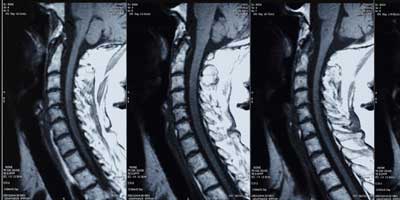Locations

Fax: (303) 762-9292

Minimally Invasive Low Back Pain Treatment: IDET

Intradiscal Electrothermoplasty or IDET is a minimally invasive procedure used to treat lumbar discogenic pain, or pain caused by a bulging low back disc. IDET helps reduce nerve impingement and pain caused by a bulging intervertebral disc.
Before IDET is Performed
Discography is performed to detect exactly which disc or discs are causing pain. During discography, the doctor is able to evaluate your condition and determine if you are a candidate for the IDET procedure.
About the IDET Procedure
IDET is usually performed on an outpatient basis. To keep you comfortable during the procedure, you are given a sedative and local anesthetic. Through your IV line, an antibiotic is administered to prevent infection.
Using fluoroscopic guidance (real time x-ray), your surgeon inserts a hollow needle with a catheter (flexible tube) and electrode into the intervertebral disc. The catheter encircles the disc's annulus fibrosis. The electrode is sufficiently heated to destroy small nerve fibers that have grown into the damaged disc and cause pain. The heat also seals small tears or cracks called fissures and stimulates the body's production of proteins to strengthen the disc.
Complications are rare and may include infection, nerve damage, or disc damage.
Recovery
After the procedure, your vital signs are monitored and you are given a back support (or brace) to wear for several weeks. The first few days after your procedure, you should rest and avoid twisting movement or lifting anything heavy.
Pain relief is usually not immediate as healing takes time. It is not unusual for patients to experience increased pain the first few days after IDET is performed. Your doctor will prescribe or recommend pain medication as needed.
Shortly after the procedure you will begin physical therapy to reduce pain, increase flexibility, and build strength. Gentle stretches and walking is encouraged. Activity is gradually increased.
Our View of IDET
The scientific evidence that Intradiscal Electrothermoplasty is effective is not convincing. There are instances when IDET appears to be effective and other cases where results are disappointing. It appears results may deteriorate with time. However, in some cases the procedure may be clearly indicated. In such situations, if you are aware of IDET's limitations, we may consider this procedure. Your doctor is pleased to discuss IDET with you and answer any questions.








